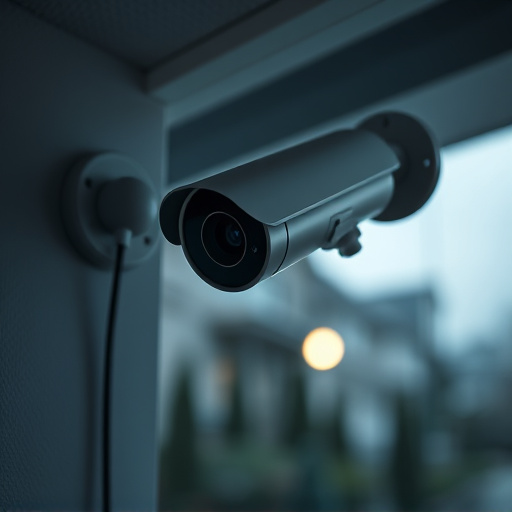High-quality hidden security cameras offer advanced, discreet protection for homes, businesses, and public spaces. Blending seamlessly into surroundings as everyday objects, these cameras provide clear footage monitored remotely, featuring superior image quality, night vision, motion detection, and two-way audio. Wireless connectivity allows easy integration into existing networks, enabling access via smartphones or computers. Ideal for surveillance in bustling offices to quiet residential areas, they enhance security swiftly while addressing legal and ethical considerations through responsible deployment practices that balance security needs with privacy rights.
High-quality hidden security cameras offer discreet, yet powerful surveillance solutions for homes, businesses, and public spaces. This comprehensive guide explores the key features, types, and benefits of these advanced devices, from enhancing safety to deterring crime. We’ll delve into setting up and maintaining your clandestine system while navigating legal considerations and ethical use. Understand the power of high-resolution hidden cameras and their impact on modern security.
Understanding High-Quality Hidden Security Cameras
High-quality hidden security cameras are a sophisticated and discreet way to protect your property, offering peace of mind by providing clear, detailed footage that can be monitored remotely. These advanced devices blend seamlessly into their surroundings, often resembling everyday objects like light bulbs, power outlets, or even rocks, making them an excellent choice for homes, businesses, and public spaces where discretion is key.
Their superior image quality, typically achieved through high-resolution sensors and advanced lenses, ensures that every detail is captured sharply and vividly, both during the day and in low-light conditions. Additionally, features like night vision, motion detection, and two-way audio enable users to respond swiftly to potential issues, enhancing overall security. With wireless connectivity becoming more common, these cameras can be easily integrated into existing home or office networks, allowing for remote access and management via smartphones or computers.
Key Features and Benefits of High-Res Hidden Cameras
High-resolution hidden security cameras offer an advanced level of surveillance, blending seamlessly into their surroundings while delivering crisp and clear footage. These innovative devices are designed to provide detailed insights, ensuring optimal security for homes, businesses, and public spaces. One of the key features is their ability to capture high-definition video, often in 1080p or even 4K resolution, allowing for easy identification of individuals and objects. This level of clarity is particularly beneficial for identifying potential threats or gathering evidence in various scenarios.
The benefits extend beyond image quality. Hidden cameras are designed with advanced features like night vision, motion detection, and remote access via mobile apps. Night vision ensures continuous monitoring even in low-light conditions, while motion sensors trigger recordings, saving storage space. Remote access enables users to monitor live feeds or review recorded footage from anywhere, offering peace of mind and the ability to respond swiftly to any incidents. These cameras contribute to enhanced security by providing a comprehensive, unobtrusive, and high-tech surveillance solution.
Types and Applications in Different Environments
High-quality hidden security cameras offer a discrete yet powerful surveillance solution for various environments. These cameras are designed to blend seamlessly into their surroundings, whether it’s a bustling office, a quiet residential area, or a remote industrial site. One common type is the wireless hidden camera, which can be easily installed and connected to a network, allowing remote monitoring via smartphone or computer. They’re ideal for homes, businesses, and public spaces where discretion is key.
Another popular option is the miniature security camera, known for its small size and advanced features. These tiny cameras can capture high-resolution footage and often include motion detection, infrared capabilities, and long-lasting batteries. They’re versatile and suitable for applications like monitoring warehouses, securing valuable assets in retail stores, or even covert surveillance in sensitive areas. The choice between these types depends on the specific needs of the environment and the level of discretion required.
Setting Up and Maintaining Your Discreet Surveillance System
High-quality hidden security cameras offer a discreet yet powerful surveillance solution for homes, businesses, and public spaces. Setting up such a system requires careful planning and consideration to ensure optimal placement and effective monitoring. Begin by identifying areas that need constant observation, be it entry points, valuable asset locations, or high-traffic zones. Next, select high-quality hidden cameras suitable for your needs; these discreet devices come in various forms, from small, unassuming sensors to sophisticated mock light bulbs or smoke detectors.
Proper installation is key to maintaining the integrity of your surveillance system. Mounting these cameras strategically ensures they capture clear, detailed footage without drawing attention. Regular maintenance involves testing connections, checking battery life (for wireless models), and updating firmware to ensure optimal performance. Additionally, keeping a close eye on storage capacity ensures you don’t miss any crucial data. With regular upkeep, high-quality hidden security cameras provide peace of mind, enhancing safety and security in both private and public settings.
Legal Considerations and Ethical Use of Hidden Cameras
The deployment of high-quality hidden security cameras raises a series of legal and ethical considerations that must be carefully navigated. While these devices offer enhanced surveillance capabilities, their covert nature can pose challenges in terms of privacy rights and data protection. In many jurisdictions, there are strict regulations governing the use of surveillance technology, including requirements for consent, notice of monitoring, and limitations on the types of information that can be collected.
The ethical use of hidden cameras requires a balance between security needs and individual freedoms. It’s crucial for organizations to establish clear policies outlining when and where these devices can be installed, ensuring transparency in their operation. Proper training and oversight are essential to prevent misuse or abuse of high-quality hidden security cameras, fostering a culture of responsible surveillance practices that respect privacy while safeguarding against potential threats.
